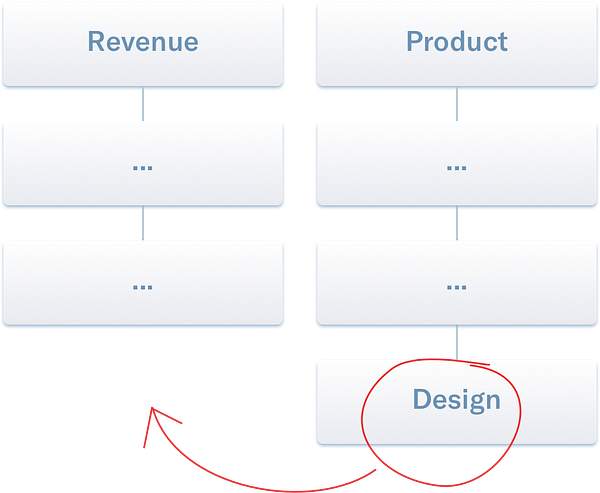Doing Things Differently: Where we organize design at Catalyze
Posted: January 02, 2016

The definition of #Design is and has always been fluid, but more so now than ever. Technology disruption forces the job of the #Designer to change at an exponential rate. At Catalyze design has fit into the proverbial modern molding of tech companies. Product is the parent, engineering a sibling. When creating and shipping #SaaS products this structure typically works well. It is well tested and documented.
When creating new #Services, stratified by consulting, and building primarily system-to-system products this structure falls apart. Design becomes a larger company-wide goal, and confining it to product leaves money on the table. Because of this, we’ve decided to move design under the #Revenue team. To get a better understanding of exactly what we’ll be doing, here’s an example of a few of our goals:
- Ensure our brand is felt and experienced at every interaction point customers and prospects have with the organization. As a team we must have an intimate understanding of the brand. Our job is to create an identity, organize that into a system, assist in dispersion, and then reorganize those bits into a coherent voice.^^
- Continue to mold and shape branded interactions on the product level. Moving design outside of product doesn’t mean we no longer participate in product design. Quite the contrary. Now that we have a closer tie to the organization as a whole, design becomes paramount to the success of product as we bridge the gap between the market and engineering.
- Work with teams company wide to identify inefficiencies and turn those into opportunities for revenue generation. Process, product and operational inefficiencies are common in every business. By working with individuals and teams, design will solve these inefficiencies using design-oriented thinking.
These #Goals, while nebulous at this point, will all have highly developed, measurable #KPIs on the project level. Eventually, we need to get to a place where design output can be measured as a percentage of uptick.
Because technology moves so quickly and design is inherently fluid, tools force design to consume the jobs of others (and vise versa — we’re constantly fighting to survive in the world of automation). It’s not difficult to imagine how some of these projects will manifest. They will require engineering, management, creativity, and research. As a company, we’ve built these skills into the design team. In this way design is a holistic, self-sustaining studio that can function autonomously inside of the organization.
This is an experiment. Turning design into science is perhaps an unpopular motivation, yet for many, design defines science. It’s a way in which we can currently explain the world around us.
I’ll be documenting our findings as we explore this new way of utilizing design, both here and on the Catalyze company blog. Stay tuned.